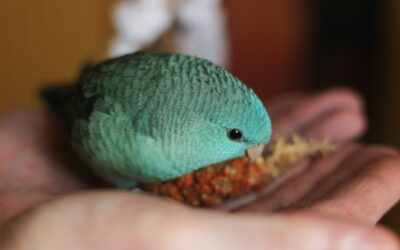Why is my dog panting so much more than usual? While panting is perfectly normal for dogs, excessive or heavy panting could be a sign of an underlying health condition—or it might indicate your four-legged friend is simply overheated or anxious. Understanding the reasons behind your dog’s panting can help you determine whether it’s normal or if urgent veterinary care is needed.
In this post, we’ll explore common reasons for panting in dogs, what to watch for, and when it’s time to call your vet. Whether it’s a warm day or your dog seems to be panting excessively for no obvious reason, we’ve got you covered.

Why Do Dogs Pant?
Panting is a natural and necessary function for dogs. Unlike humans, dogs don’t sweat the same way to regulate their body temperature. Instead, they rely on panting to cool down by evaporating moisture from their tongues and the lining of their upper respiratory tract. It’s completely normal for healthy dogs to start panting after light exercise, excitement, or when temperatures rise.
However, there’s a difference between normal panting and excessive panting.
Normal Panting
Normal panting occurs when your dog needs to cool down or catch their breath. It’s typically light and steady, with no other alarming symptoms like noisy breathing or discomfort. For instance:
- Your dog might pant after a brisk walk.
- They might pant more on a warm day or when playing outside.
- Some short-nosed (brachycephalic) breeds, like Boston Terriers, naturally pant a little more due to their facial structure.
Excessive or Heavy Panting
Panting becomes concerning when it’s heavier than usual, lasts for an extended period, or is accompanied by other symptoms. Heavy panting could indicate an underlying cause, such as pain, stress, or even a chronic health problem.
How to tell the difference? If your dog’s panting persists after rest, or they seem to be panting excessively for no apparent reason, it’s time to dig deeper.

Common Reasons Why Dogs Pant Heavily
There are several possible reasons why your dog might be breathing heavily or panting too much. Below are some common causes:
Overheating and Heatstroke
Warm weather often causes many dogs to pant as they work to regulate their body temperature. However, excessive panting on a hot day could be an early sign of heatstroke. Look for symptoms such as:
Quick Tip: Move your pet to a shady spot or cool air, offer water, and contact your vet immediately if symptoms persist.
Signs and Symptoms of Overheating or a Heat Stroke
It’s important to be aware of the signs and symptoms of overheating or a heat stroke in dogs, especially during hot weather or vigorous physical activity. Here are some common indicators to watch out for:
- Excessive Panting: Panting is a natural way for dogs to regulate their body temperature, but excessive, rapid, or labored panting can be a sign of overheating.
- Excessive Drooling: Increased drooling, along with panting, may indicate that your dog is struggling to cool down.
- Red or Pale Gums: If your dog’s gums appear unusually red or pale, it could be a sign of heat stress.
- Lethargy or Weakness: Overheated dogs may exhibit signs of fatigue, weakness, or collapse.
- Vomiting or Diarrhea: Heatstroke can cause gastrointestinal upset, resulting in vomiting or diarrhea.
- Rapid Heart Rate: An accelerated heart rate is a common symptom of heatstroke.
- Dizziness or Disorientation: Dogs experiencing heatstroke may show signs of confusion, dizziness, or lack of coordination.
- Seizures or Unconsciousness: In severe cases, dogs may experience seizures or become unconscious.
If you notice any of these signs or suspect that your dog is overheating, it’s crucial to take immediate action to cool them down. Move them to a shaded or air-conditioned area, provide cool water to drink, and use cool (not cold) water or damp towels to help lower their body temperature gradually.
Contact your veterinarian right away for further guidance and assistance. Remember, prevention is key, so always be mindful of your dog’s exposure to heat and ensure they have access to shade and fresh water.
Stress or Anxiety
Dogs affected by separation anxiety, fear of loud noises, or other stressors may pant more than usual. Panting from anxiety is often accompanied by other symptoms like trembling, pacing, or whining. For example:
- Excessive Panting and Drooling: When dogs are anxious or stressed, they may pant excessively and drool more than usual.
- Restlessness and Pacing: Dogs may exhibit restlessness, constantly moving around, and pacing back and forth.
- Shaking or Trembling: Anxiety and stress can cause dogs to shake or tremble, sometimes noticeably.
- Hiding or Seeking Comfort: Dogs may seek hiding spots or seek comfort from their owners, wanting reassurance during stressful situations.
- Excessive Barking or Whining: Anxious dogs may bark or whine excessively, expressing their unease or seeking attention.
- Loss of Appetite or Increased Appetite: Some dogs may lose interest in food when anxious, while others may show an increased appetite as a coping mechanism.
- Destructive Behavior: Dogs may engage in destructive behaviors, such as chewing furniture or excessive scratching, as a way to channel their anxiety.
- Changes in Body Language: Watch out for signs like lowered ears, tucked tail, dilated pupils, or a hunched posture, which can indicate stress or anxiety.
If you notice these signs in your dog, it’s important to provide a calming and safe environment. Comfort them with gentle reassurance and consider consulting with a veterinarian or professional dog trainer for guidance on managing their anxiety. Remember, understanding and addressing your dog’s anxiety is key to their overall well-being.3. Pain or Discomfort
Dogs often use panting as a way to cope with pain. Since they can’t tell us directly when they’re in discomfort, panting may be one of their ways to communicate that something is wrong. Chronic or sudden pain, such as arthritis or an injury, could be behind your dog’s abnormal panting.
Be on the lookout for other signs like limping, restlessness, or a change in behavior.
Heart Disease and Respiratory Issues
Heavy panting or breathing heavily can also be caused by heart failure, lung disease, or other respiratory issues. Some of the warning signs include:
- Labored or noisy breathing
- Persistent cough
- Fatigue or weakness
If left untreated, heart failure or lung disease can lead to life-threatening oxygen deprivation. Consult your veterinarian if these symptoms occur.
Cushing’s Disease
Cushing’s disease occurs when a dog’s body produces too much cortisol. Common symptoms include:
- Heavy panting
- Excessive thirst and urination
- Hair loss or a pot-bellied appearance
If your dog is panting excessively alongside these symptoms, a visit to the veterinarian can confirm the diagnosis and discuss treatment options.
Laryngeal Paralysis
Seen more frequently in older dogs, laryngeal paralysis is when the muscles controlling the larynx (voice box) weaken, causing difficult or noisy breathing. Dogs affected by this condition often pant heavily, especially during light exercise or in warm temperatures.
Treatment options vary by severity but may include surgical correction in advanced cases.
When to Seek Urgent Veterinary Care
Not every instance of panting requires a trip to the vet, but certain situations do. Call your veterinarian immediately if your dog:
- Is panting heavily with no obvious reason (e.g., no exercise or warm weather)
- Shows signs of oxygen deprivation, such as a blue-tinged tongue or gums
- Experiences additional symptoms like vomiting, lethargy, or collapse
- Has a medical history of heart or lung disease
A veterinarian can determine the underlying cause and recommend appropriate treatment, keeping your pet safe and healthy.

How to Help a Dog That’s Panting Excessively
You can address excessive panting with the following steps as long as it’s not an emergency:
Cool Them Down
If your dog is panting from heat, move them to a cooler area, provide fresh water, and encourage rest.
Check Their Stress Levels
For dogs feeling anxious, create a calming environment. Use soothing music, comforting scents, or safe spaces to reduce their stress.
Monitor Their Symptoms
Keep track of your dog’s breathing and other symptoms. Note how often and how heavily they’re panting, especially during rest.
Schedule a Vet Visit
If panting persists or other symptoms appear, consult your veterinarian. They can identify whether this is related to a chronic health problem, respiratory issues, or something else.
By staying alert and proactive, you can ensure your dog gets the care they need.
Here are some valuable links and resources related to dog health and veterinary care:
- American Veterinary Medical Association (AVMA)](https://www.avma.org/): The AVMA provides a wealth of information on pet health, including articles, guidelines, and resources from trusted veterinary professionals.
- Pet Poison Helpline: A 24/7 helpline offering assistance in case of suspected pet poisoning. They provide immediate guidance and can help determine if emergency veterinary care is necessary.
- [The American Kennel Club (AKC) Health Resources](https://www.akc.org/dog-owners/health/): The AKC offers a range of health resources, including articles, breed-specific health information, and tips for maintaining your dog’s well-being.
- ASPCA Animal Poison Control Center: Another valuable resource for pet owners, providing information on potential hazards, poison control, and steps to take in case of emergencies.
- WebMD Pets: WebMD offers a dedicated section for pet health, covering various topics such as common ailments, preventive care, and general wellness advice.
Remember, while these resources can provide helpful information, it’s always best to consult with a qualified veterinarian for accurate diagnosis and treatment options for your dog’s specific needs.

Kate’s K9 Pet Care Services will keep your dog safe, cool and hydrated while your away or at work. Contact us today!
Keeping Your Dog Happy and Healthy | Why Is My Dog Panting So Much?
Dogs panting heavily can be startling for any pet owner, but it’s important to stay calm and assess the situation. Sometimes, a warm day or mild anxiety can be the cause, but heavy or persistent panting could be a sign of a more serious condition like Cushing’s disease, heart failure, or pain.
If your dog’s panting seems unusual or excessive, don’t hesitate to contact your vet. Your dog’s health and happiness are worth it!
Taking the time to understand your dog’s behavior and identifying potential health concerns is one of the best ways to keep your four-legged friend healthy. Become familiar with their normal respiratory rate and watch for changes—those insights can make all the difference in your pet’s care.






